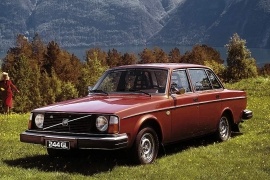VOLVO 244 Models/Series Timeline, Specifications & Photos
First production year: 1975
Engines: Gasoline, Diesel
With more than 2.8 million vehicles sold between 1973 and 1992, the Volvo 244 was one of the most important vehicles ever made by the Swedish car company.
The design language at the beginning of the '70s was based on straight lines and flat surfaces. It was the departure from the cars of the '50s, with flared and rounded fenders, curved greenhouses, and trunks. It was the era when modern meant flat and straight.
The 244 was the successor of the 144 model. In those times, Volvo had a specific mode to name its models. The first number was the body-series number, the second was the number of cylinders under the hood and the last was the doors' number. That being said, the 244 was a second-generation model with four cylinders and four doors. The boxy design also was a mathematical result for the occupant's needs.
For the U.S. market, it featured four squared units. The beltline was almost straight from hood to trunk lid. The big bumpers were installed and equipped with shock-damping and in the event of an accident under 8 kph (5 mph) those bumpers could have absorbed all the kinetic energy.
Since the car was conceived from inside-out, five adults could sit in comfort inside the cabin. The 244 was launched without an AC-unit, but that was added later on especially for the U.S. market. In Sweden nobody needed it. For more comfort, the 244 was equipped with a 3-speed automatic transmission, while the 4-speed manual was fitted as standard. The basic engine was the inline-four unit that evolved from a 2.0-liter to a 2.3-liter for the latter models and since there was a higher demand for better performances, a turbo version was added in the late '80s.
